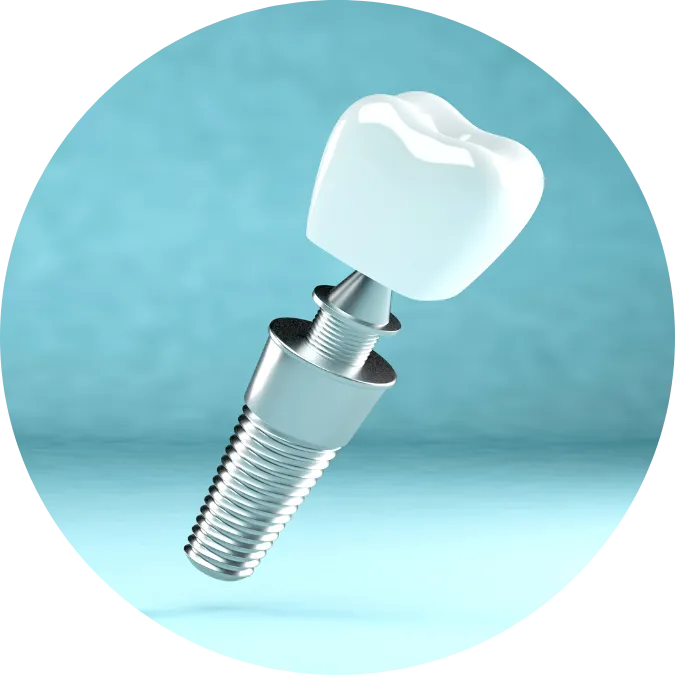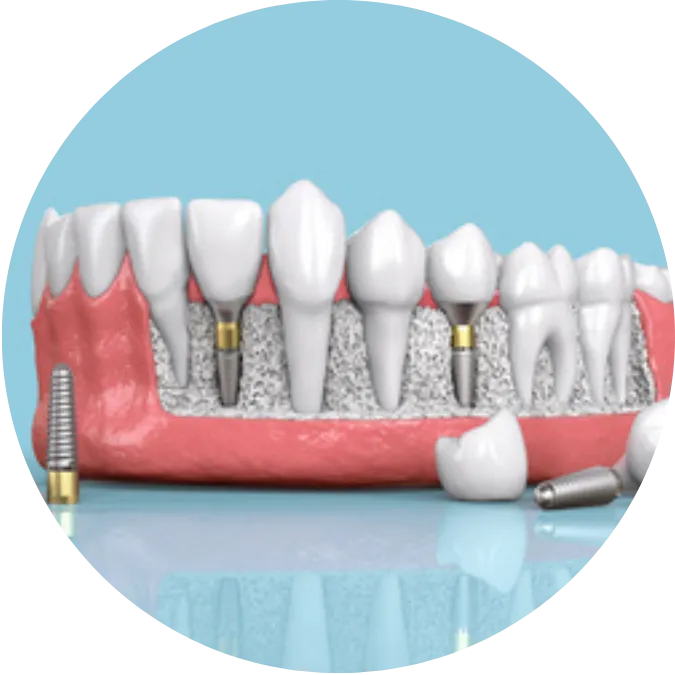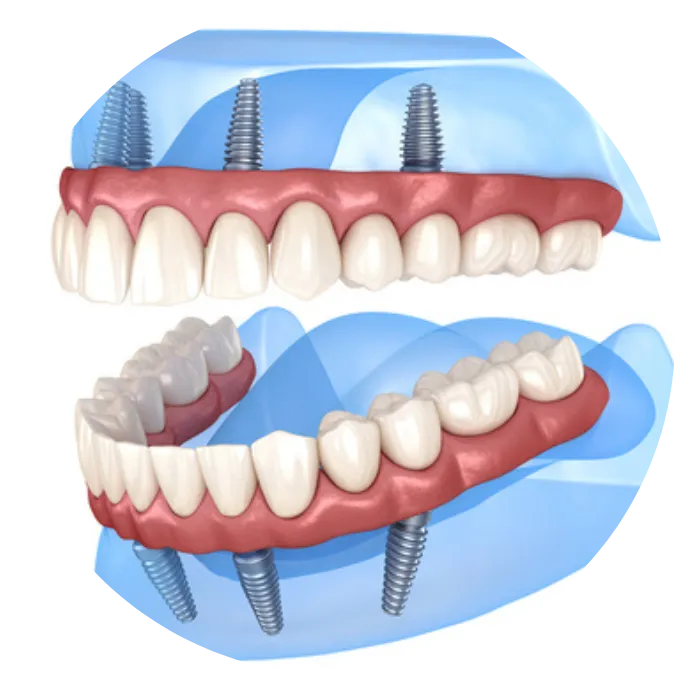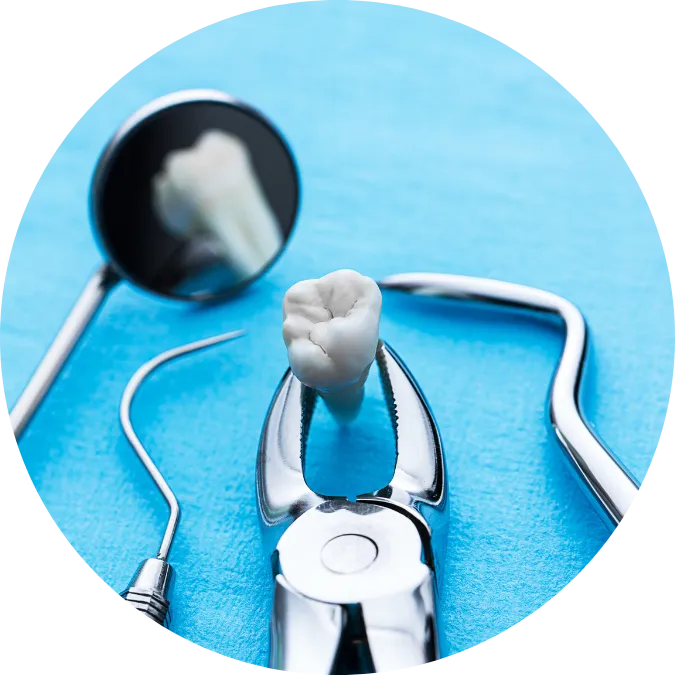Dental Implant Process
Your dental implant process depends on the implant and restoration you need, the health of your remaining teeth, and the condition of your jawbone. You may need several dental procedures to help your bone fuse around the implant. These procedures ensure the success of your dental implant. A traditional dental implant may not be your only option if you have multiple missing teeth. Dr. Samani may recommend other procedures, such as implant-supported dentures. Here are some of the possible treatment plans depending on your situation:
Single Tooth Replacement
A single dental implant can be used to replace one missing tooth. A titanium post is implanted into the jawbone where the missing tooth is located. Once this has healed, a porcelain or zirconia crown is attached to the post, creating a new tooth that looks and functions just like your natural teeth.


Multiple Teeth Replacement
Multiple dental implants can replace two or more adjacent missing teeth. The procedure involves placing multiple titanium posts into your jawbone and attaching artificial teeth between them. You might hear this referred to as an implant-supported bridge or fixed partial denture.
Full Mouth Replacement
A full-mouth dental implant is a treatment to replace all of the teeth in your upper or lower jaw or both. This procedure can be done with either a single implant for each tooth or a few implants
placed strategically to support a dental bridge.


Tooth Extraction
Before you can get dental implants, your dentist will recommend removing any of your teeth causing problems. For example, if you have a missing tooth or one that is cracked, damaged, or too small for the implant to fit properly, it's best to have it removed before getting the implant.
The main reason for this is that if the tooth is still in your mouth, there is a risk that it could affect the placement of the implant. It could also cause damage to the implant if it moves during treatment, which increases the risk of complications. You don't need extraction if your teeth meet the criteria for dental implants.
Sinus Augmentation
The success of dental implants largely depends on the amount and quality of the bone where the implant will be placed. The upper back jaw is typically one of the hardest areas to place an implant due to insufficient bone quantity and quality and its proximity to the sinus. If you have lost bone in that area due to gum disease or tooth loss, you may not have enough bone left for an implant.
Sinus augmentation, also known as sinus lift surgery, is a dental procedure used to add height to the sinus floor, making it possible to place dental implants in the upper jaw. This procedure is necessary when there is not enough bone height in the upper jaw. The surgery involves an incision in the gum tissue and lifting the sinus membrane to expose the bone. The surgeon then adds bone graft material to the area and closes the incision.
After the surgery, the bone graft material will need to heal for several months before dental implants can be placed. The success rate for sinus lift surgery is very high, and the procedure is considered safe.
Ridge Modification
Ridge modification is a type of dental implant surgery used to change the jawbone's shape to make it more suitable for dental implants. This procedure is often necessary when there is not enough bone height or width for dental implants or when the existing bone is too soft or irregular in shape.
Ridge modification surgery can be performed using various techniques, depending on the patient's specific needs. In some cases, the surgeon may need to remove a section of the jawbone and then graft new bone into the area. In other cases, the surgeon may simply need to reshape the existing bone.
Recovery from ridge modification surgery can take several weeks, during which patients need to eat a soft diet and take pain medication as prescribed by their surgeon. Most patients can return to normal activities within two to four weeks after surgery.
Privacy Policy | Terms and Conditions
© Cloud Dental Austin 2023
HOURS:
M-F 8am-5pm
Weekends CLOSED

